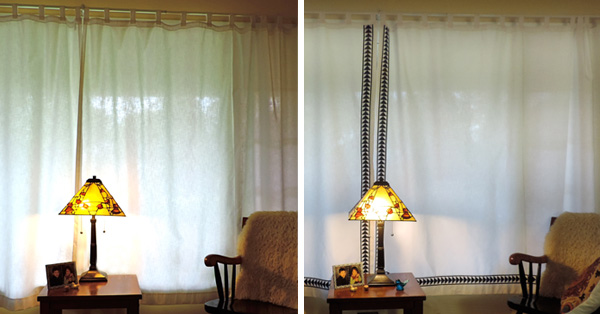
Curtains before (left) and after (right) Sashing Stash.
My mother was never thrilled with the plain white curtains she’d gotten for her wide living room windows. There just weren’t a lot of available commercial options for the size she needed. She’s had the curtains for a few years now, and while the fabric is excellent quality, the effect is ho-hum. So she snapped up my offer to spiff up her curtains with Sashing Stash.
We agreed that the black & white Flying Geese would coordinate best with her living room’s yellow walls and contrasty Art Deco elements. I wanted to trim the curtains down the center and across the bottom, so I measured the height and width of each curtain and multiplied by two. The total was 302 inches of sashing, which I could easily get out of less than a single yard of Sashing Stash’s all-Flying-Geese fabric. Joining the strips along the base of a triangle made an undetectable seam.
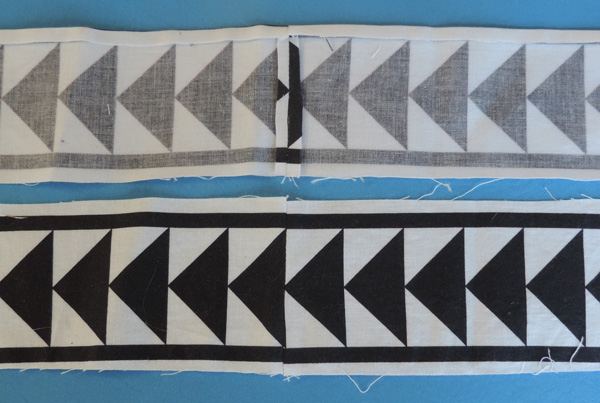
Strips joined along the base of a triangle.
Cutting and Pressing
The Flying Geese sashing can be used either with or without the black lines on either side of the geese. I kept the black lines. That meant dividing the half-inch white strip between rows so that each row of geese had a white quarter-inch seam allowance. Before doing this (see notes on cutting, below), I starched the Sashing Stash fabric. Mind you, I would never starch Sashing Stash for piecing a quilt, but to give the trim a crisp edge and stiff body to match the heavy, crisp curtain fabric, starching worked like a charm.
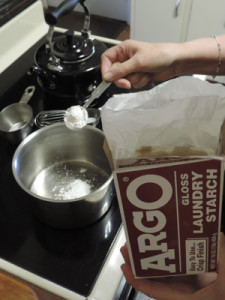
Measuring out powdered starch.
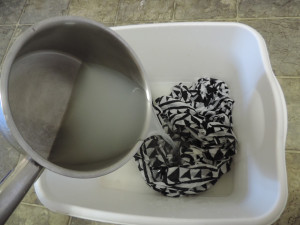
The starch bath.
My mother actually had a box of old-fashioned laundry starch, not the spray starch I use occasionally. Immediately after washing the uncut Sashing Stash in the washing machine, I mixed up a small batch of light starch and dipped the wet yardage in it.
Then I hung up the fabric until it was just damp enough for ironing. It pressed like a dream.
A word about cutting. I experimented with cutting the strips at different stages in the process:
- Cutting before the starch bath. (I tried just one strip this way. No good. Washing left ragged edges on the strip.)
- Cutting just before ironing, while the fabric was damp. (This actually worked quite well and saved having to press twice, but I am not sure how good it was for my mother’s scissors.)
- Cutting after ironing. (The best method turned out to be pressing the yardage before cutting the lines of sashing apart. The crisply ironed yardage cut beautifully.)
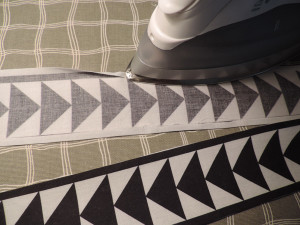
I loved how the white seam allowance disappeared neatly under the quarter-inch black border.
When pressing, I was careful to err on the side of accidentally including a touch of white rather than pressing under any of the black. Since the bands would be applied to a white background, any traces of white would disappear against the white ground of the curtains.
Turning Corners and Applying Trim
Now came the tricky part: turning the corner. There are a number of ways to “turn the corner” with Flying Geese. I chose one and proceeded to join the two strips before putting them on the curtains.
I needed to get the tip and the edges of the two thicknesses lined up perfectly, so I hand-basted them.
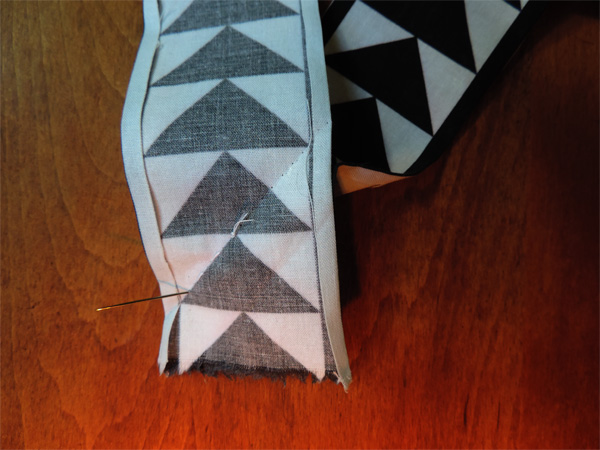
Hand-basting, starting at the point in the center.
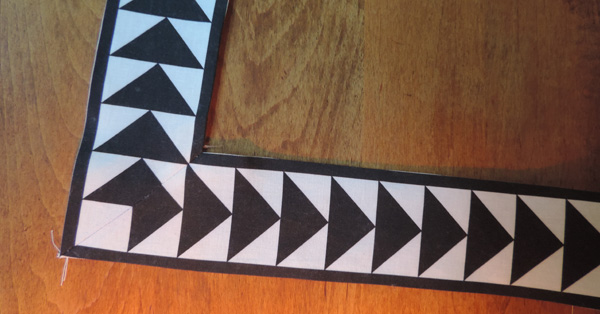
This made a lovely mitered corner.
All that was left was to topstitch the sashing to the curtains. This can be done directly with matching thread or using transparent thread, either topstitching or catching from the side with a hem stitch.
I pinned on the trim strips, starting at the mitered corner. After finishing the first curtain, I counted the number of geese and made sure the second curtain matched it.
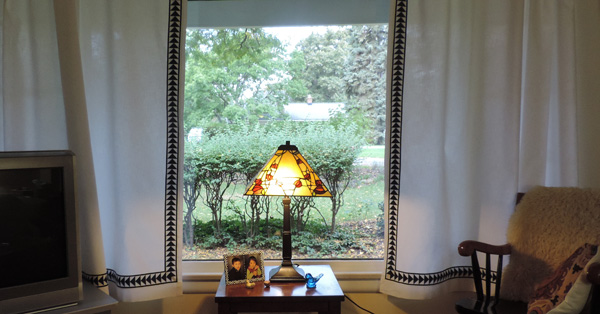
The Sashing Stash trim makes a beautiful accent that adds so much to the room!